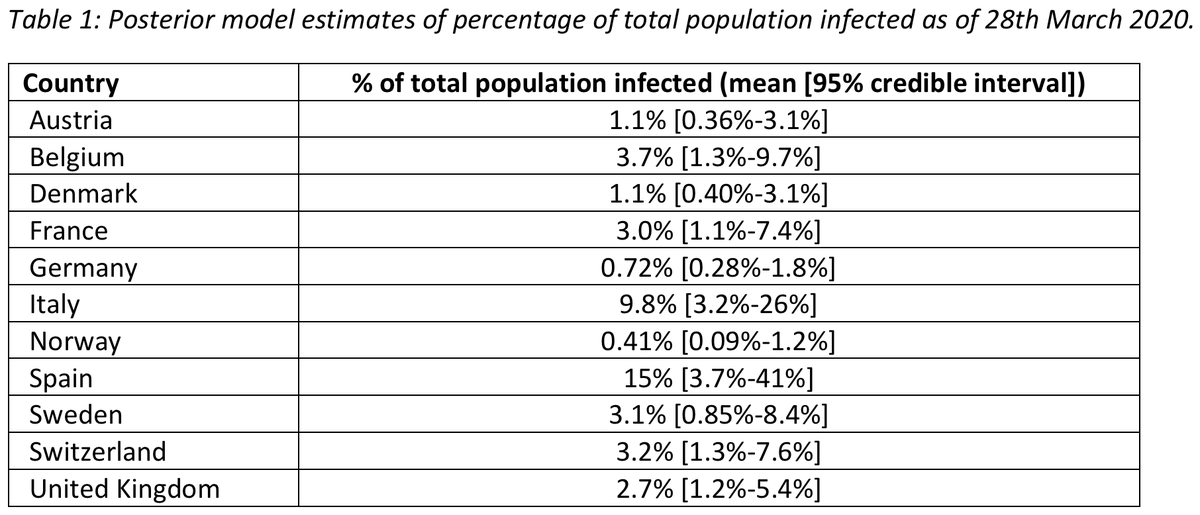How can we assess the total number of #SARSCoV2 infections that have occurred up to this point? As others have noted, it& #39;s not easy to extrapolate from confirmed cases to total infections. Some thoughts here, but no real answers. 1/9
The gold-standard approach here is to conduct serological surveys of the population. These serological assays measure the presence of antibodies in people& #39;s blood that can bind to the virus. These responses persist for months rather than ~2-3 weeks for viral shedding. 2/9
This sort of "seroprevalence" study showed that swine flu infected ~35% of the world after 1 year ( https://journals.plos.org/plosone/article?id=10.1371/journal.pone.0020358)">https://journals.plos.org/plosone/a... and that Zika infected ~60% of individuals in Northeastern Brazil during its epidemic ( https://mbio.asm.org/content/8/6/e01390-17.short).">https://mbio.asm.org/content/8... 3/9
There are a number of seroprevalence studies underway for #COVID19, including from @Stanford ( https://www.stanforddaily.com/2020/04/04/stanford-researchers-test-3200-people-for-covid-19-antibodies/)">https://www.stanforddaily.com/2020/04/0... and @PHE_uk ( https://www.theguardian.com/world/2020/mar/25/uk-coronavirus-mass-home-testing-to-be-made-available-within-days).">https://www.theguardian.com/world/202... 4/9
Seroprevalence estimates will help to understand the total number of infections and should be more comparable across regions, as a cross-sectional serological survey should be closer to a random sample as opposed to testing which has varied in capacity. 5/9
However, at this point, I& #39;m not aware of any seroprevalence results and so we& #39;re left modeling total number of infections based on confirmed cases and deaths (perhaps supplemented by viral genetics). 6/9
This report by @MRC_Outbreak ( https://www.imperial.ac.uk/mrc-global-infectious-disease-analysis/covid-19/report-13-europe-npi-impact/),">https://www.imperial.ac.uk/mrc-globa... estimates total number of infections in different European countries based on observed cases and deaths, generally estimating between 1% and 15% of the population infected. 7/9
These numbers fall well short of "herd-immunity", which would require between 50% (for R0 of 2) and 66% (for R0 of 3) of the population recovered to prevent epidemic spread. 8/9
The arrival of seroprevalence estimates should help to dial in a lot of our numbers. By learning total number of infections we can better estimate population-level severity. Hopefully data from these studies will start to emerge soon. 9/9

 Read on Twitter
Read on Twitter


